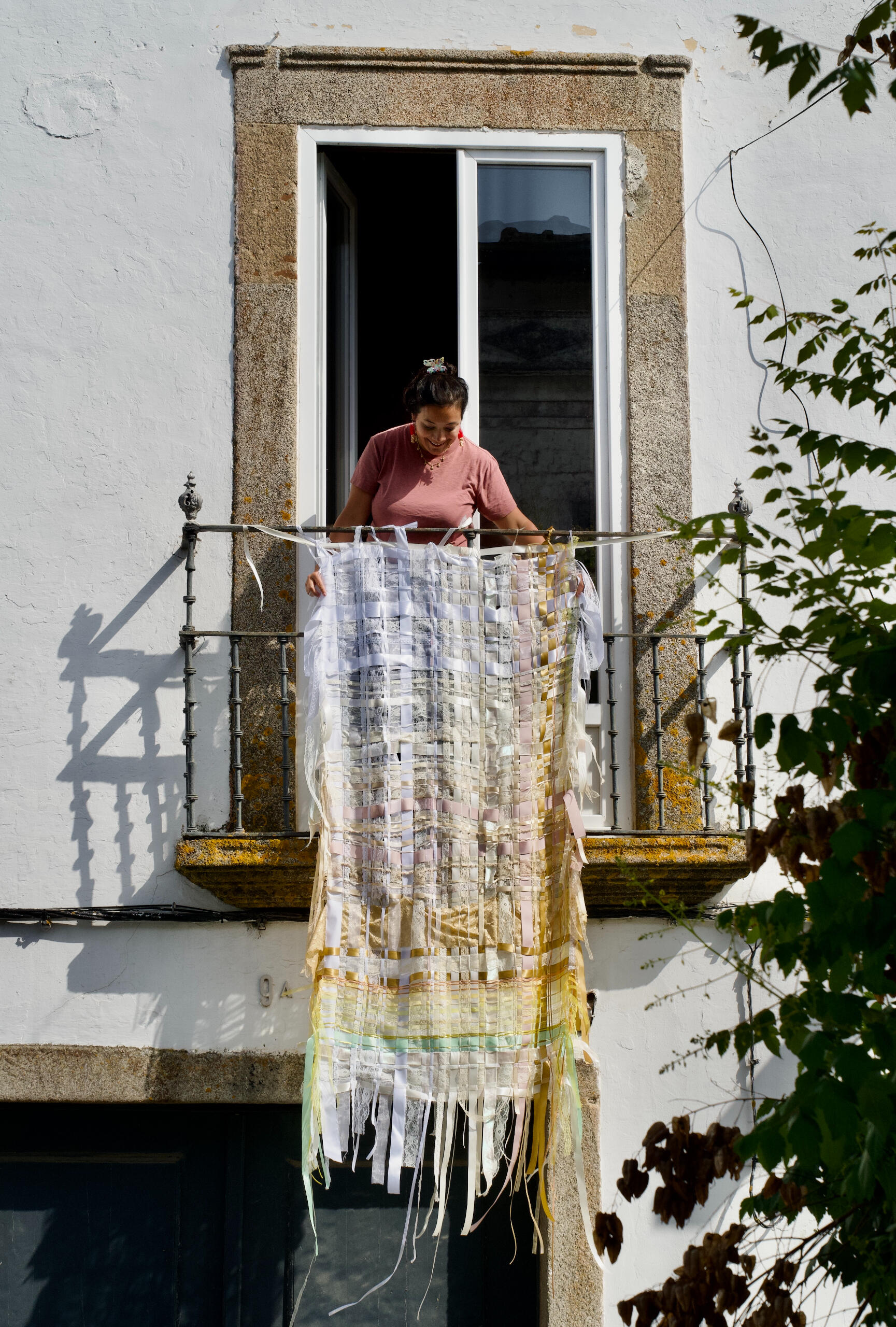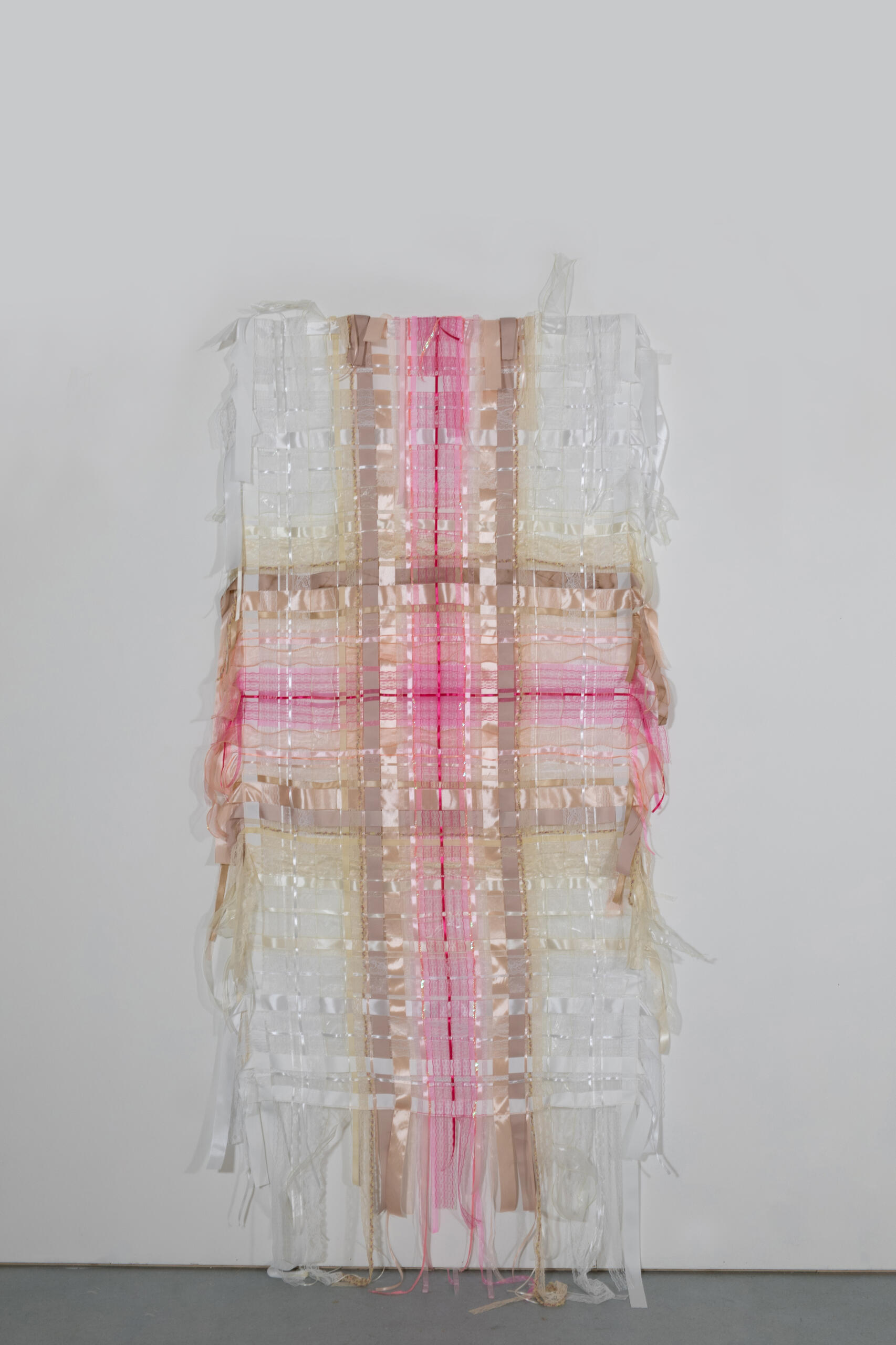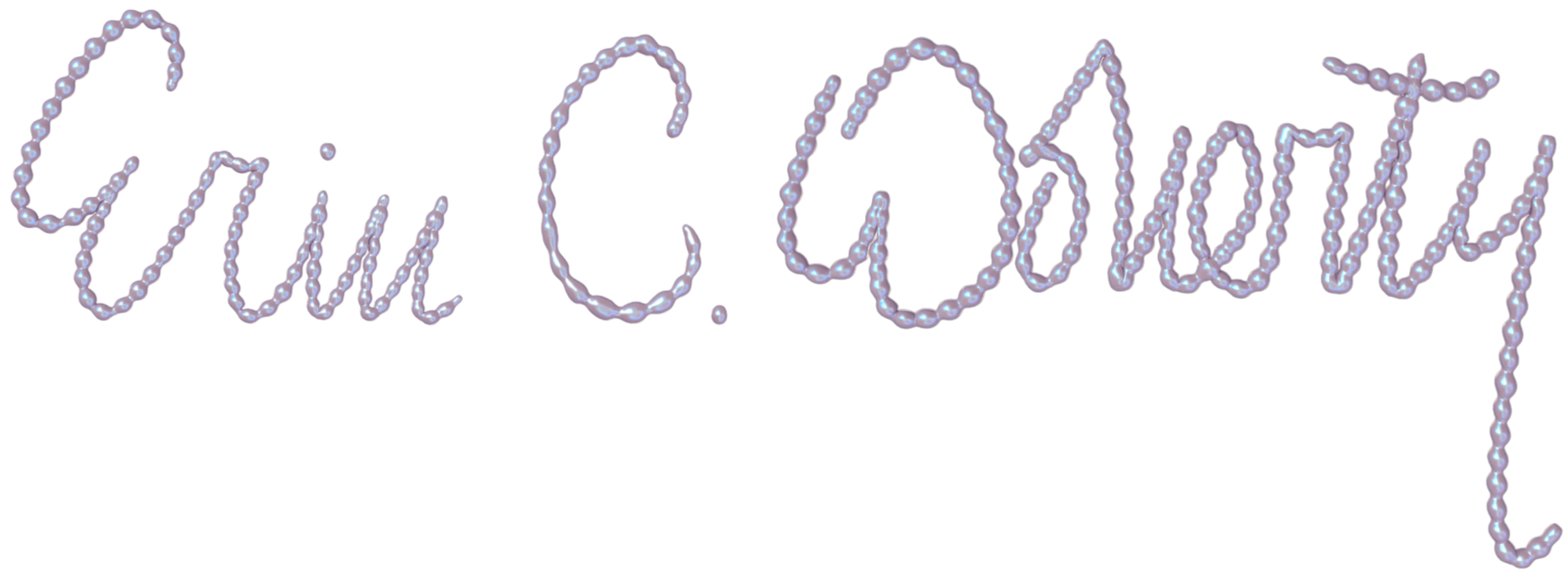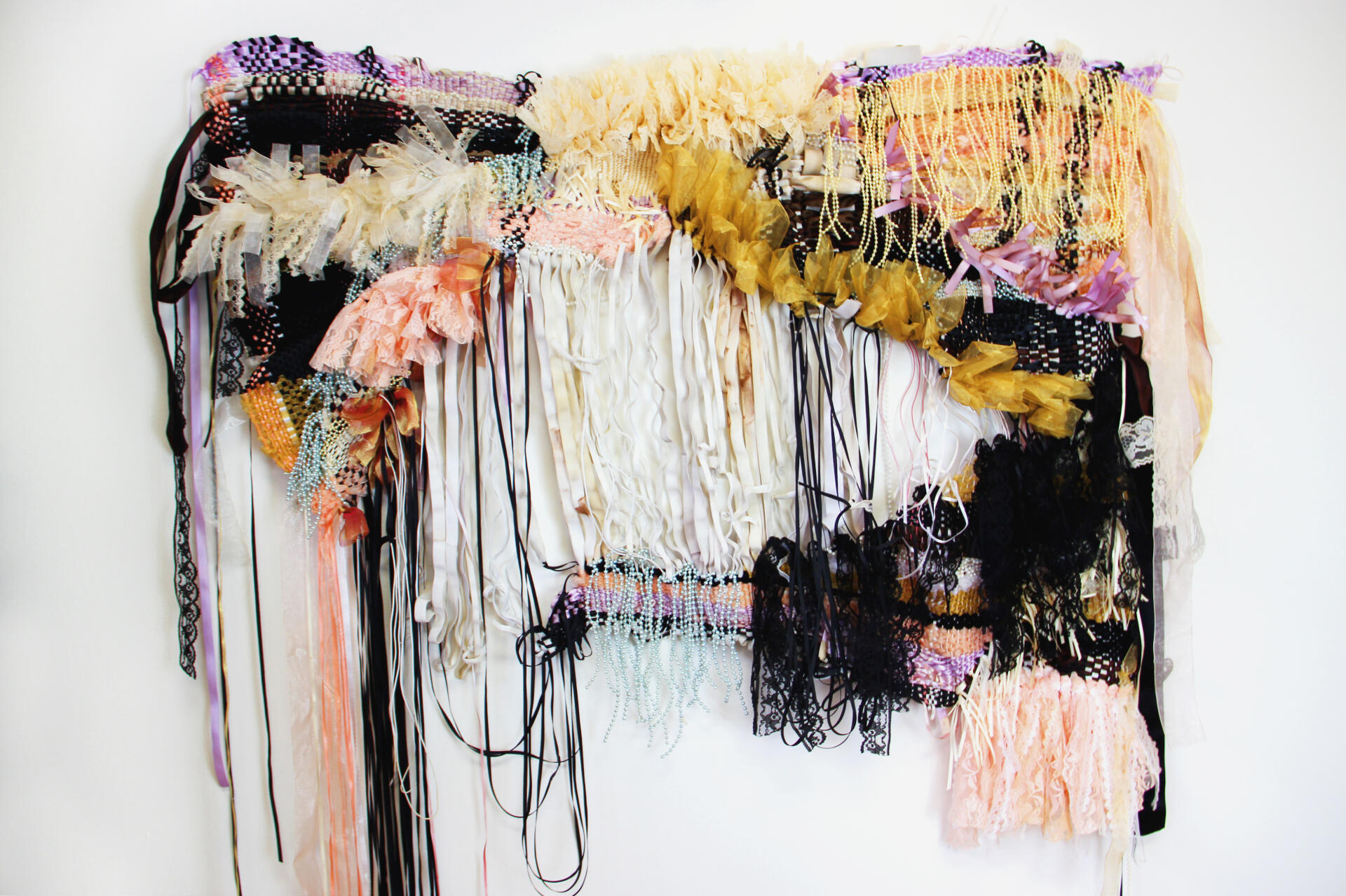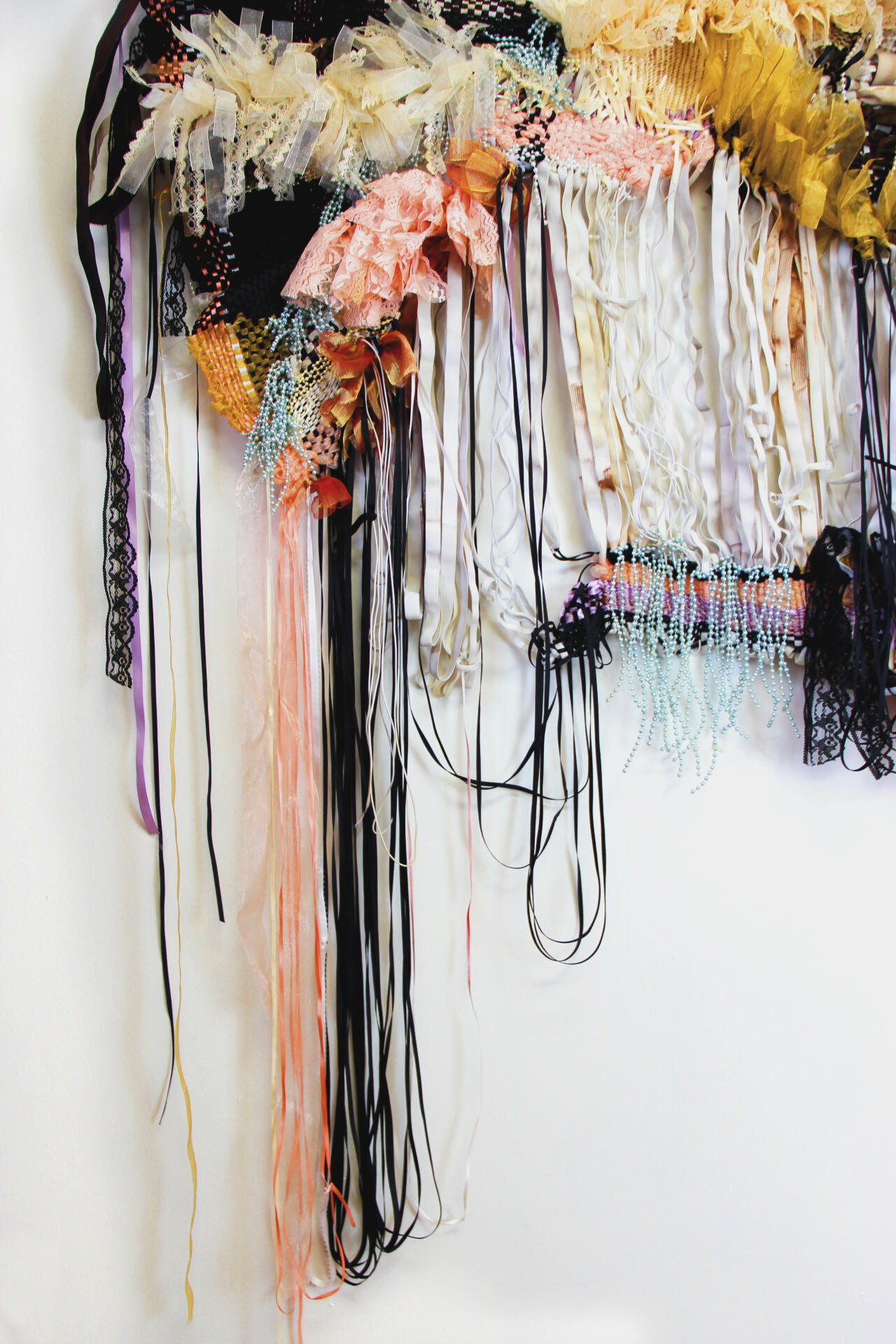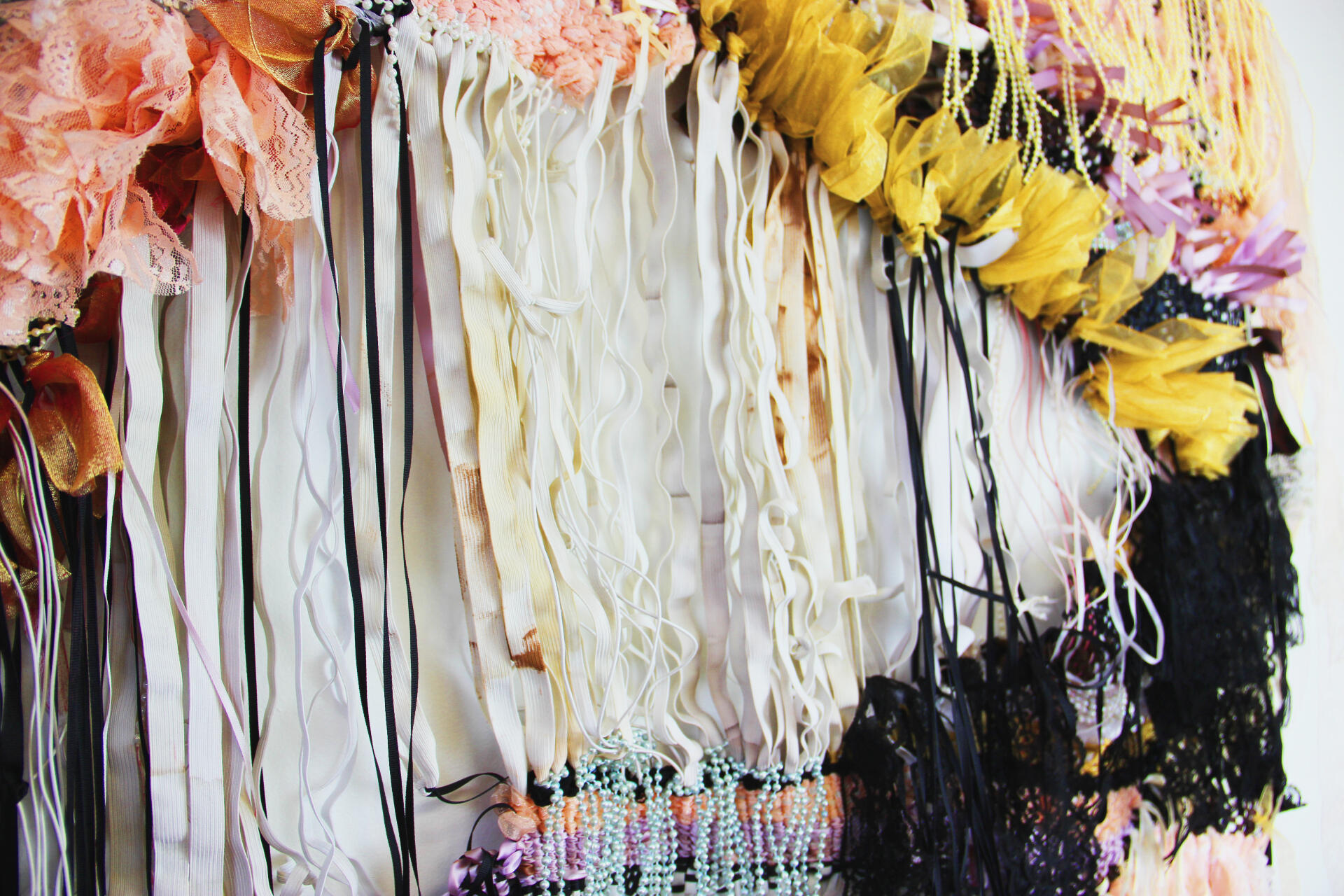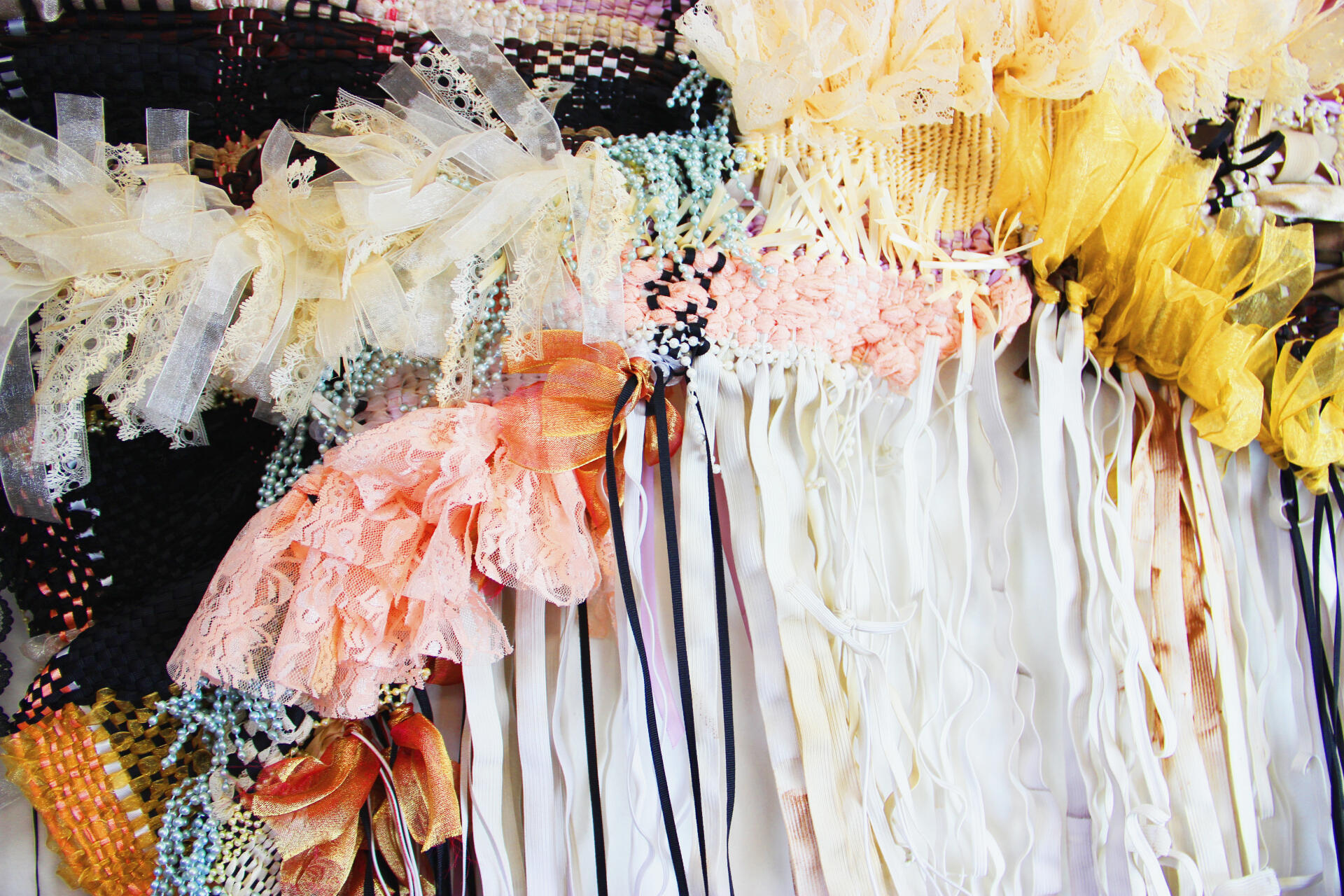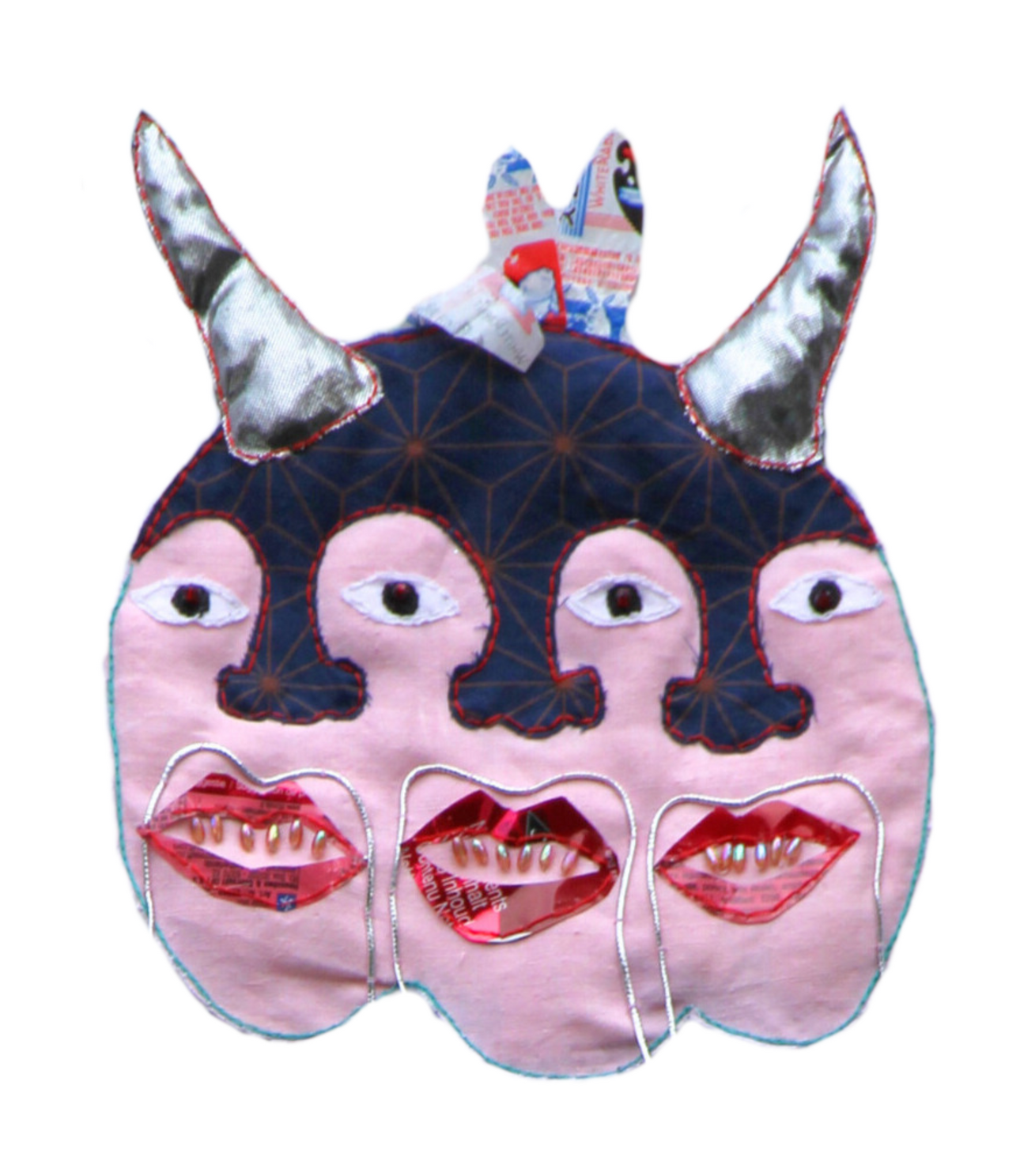
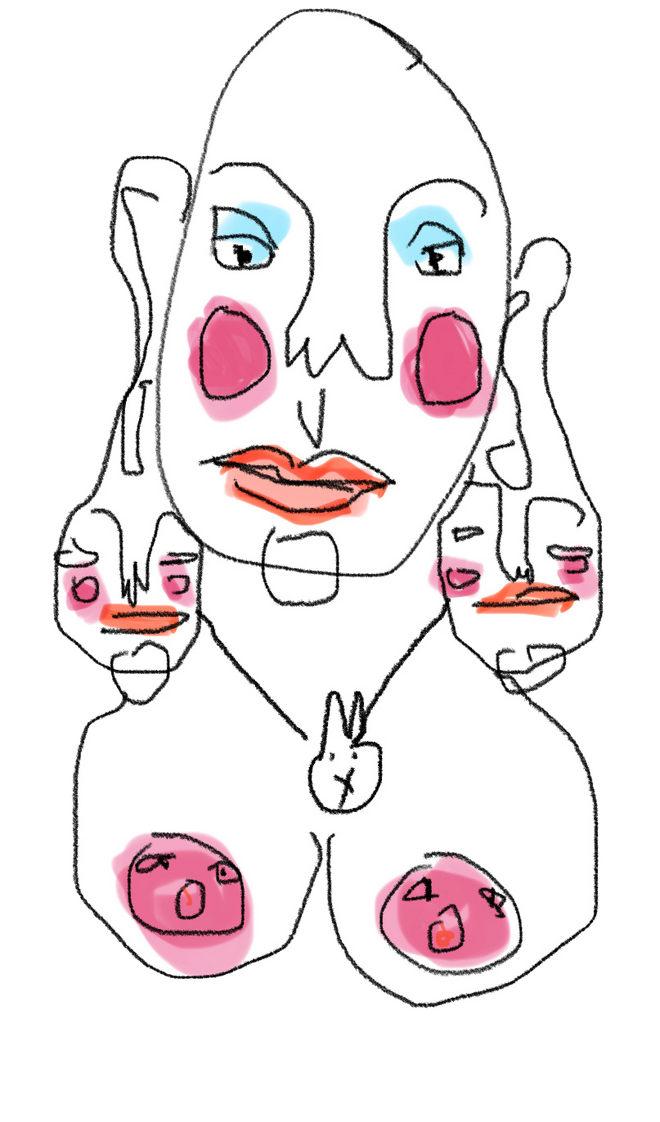
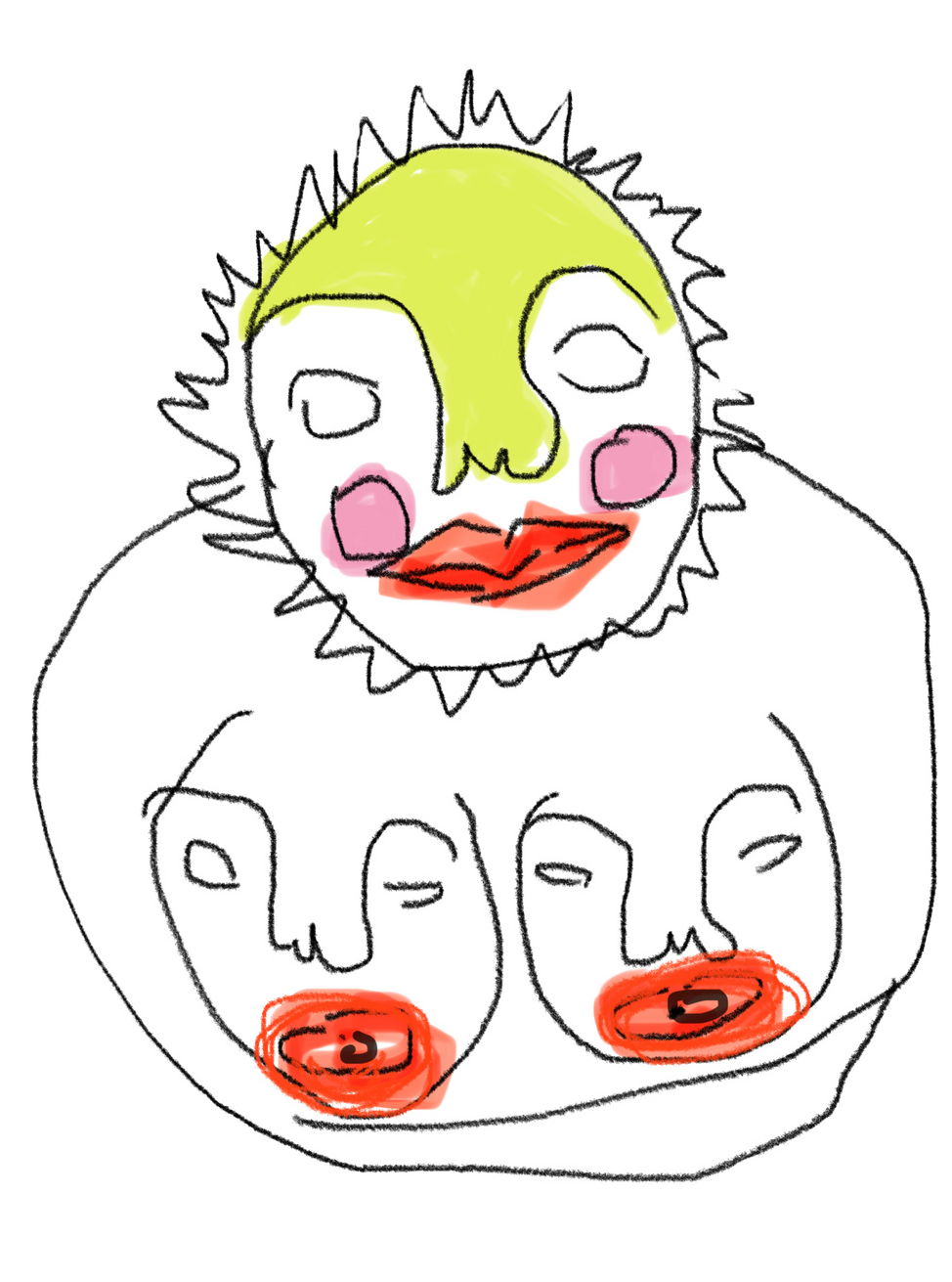
(2025)
178cm x 127cm
Second-hand fabrics, sheets, napkins, pillowcases, clothing, and tablecloths
(2025)
157cm x 124cm
Second-hand fabrics, sheets, napkins, pillowcases, clothing, and tablecloths
(2025)bedsheets and batik napkins from my late grandmother’s house, other secondhand textiles, red threadMy grandmother and I were connected by something beyond blood—an otherworldly, mystic bond rooted in shared creativity and love. Quilted with red thread, this piece honors that connection across the seen and unseen. In many Asian cultures, red thread symbolizes an invisible tie between those destined to meet—a sentiment that deeply resonates with how I feel our lives were intertwined.
(2023)
60 cm x 57 cm
embroidery thread, found and second-hand fabrics, glass beads, lace, metal wire, packagingAn embroidered version of a Lega Bwami Tricephalous-face mask (Zaïre, now the Democratic Republic of Congo).The original version of the mask was traditionally used in rituals to mark the transition into higher levels of Bwami society. This version is a meditation on multiplicity in identity; these hand-sewn mask gestures toward material hierarchies by utilizing high and low materials embroidered with a chain stitch to signify being trapped in performative cycles. The mask plays with the notions of high and low as performative opulence can be seen as a symptom of colonial trauma.

(2023)
220 cm x 20 cm
chopsticks, elastic, embroidery thread, found and second-hand fabrics, glass beads, lace, packaging, porcelain beadsLucky, powerful, and potentially destructive, the symbol of the dragon is pervasive in both Western and Eastern pop culture and myth. This Ghidorah resides in two realms: the Ghidorah of the day (sun) and the Ghidorah of the night (moon), representing the balance of action and emotion. They are the gods of destruction, extraterrestrial energy beings from another dimension, looming over Earth. Ghidorah is a talisman of luck against the imbalance of power, ready to descend on Earth to consume us all.
(2023)
68 cm x 55 cm
buttons, embroidery thread, found and second-hand linen, lace, packagingThis embroidered bicephalous face mask serves as a meditation on Doherty's struggle with bipolar disorder and performativity. The mask gestures towards duality in identity and flipping from high to low both in materiality and mental state. The work focuses on cycles within humanity, production and consumption, collecting and purging, as well as the cycles of mania and depression experienced in bipolar disorder. Ritual making is a part of the artist’s process as hyper productivity happens during periods of mania. Packaging like the mask is the alluring protective layer, a talisman of protection of liminal identity.
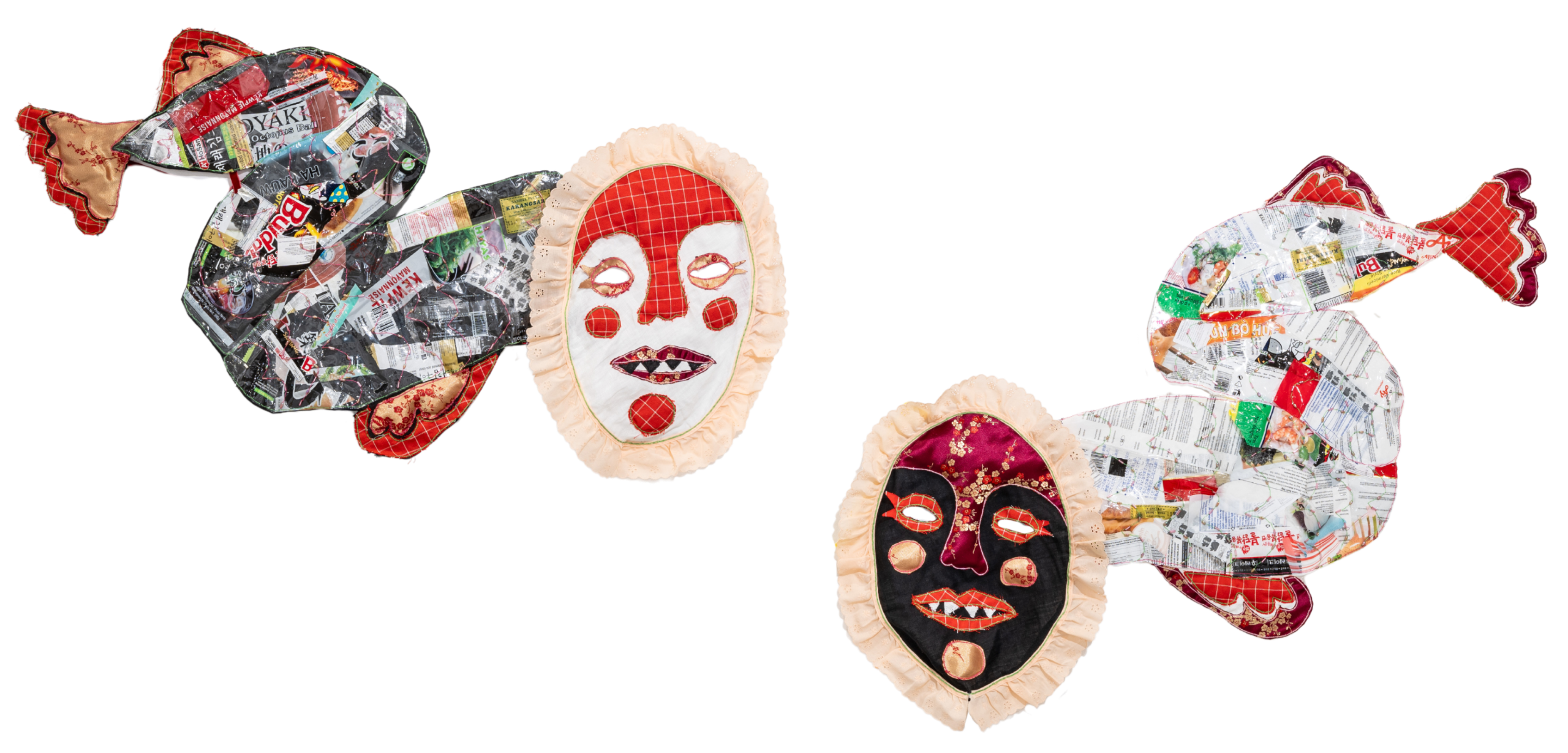
(2023)
92 cm x 56 cm each, diptych
embroidery thread, found and second-hand fabrics, glass beads, lace, metal wire, packaging, plastic beadsThese twins of embroidered construction are a mirror of each other, but they are different. Stemming from the Taoist idea that the power of the universe has two sides, dark and light, yin, and yang, these pieces are connected by their differences with a bit of each within the other. The fish are the same in method and materials with recycled fabrics, linen, and packaging, but they are simultaneously the opposite in color and position. The performance of identities can ebb and flow, each retaining a bit of the other. Mixed bodies navigate the push and pull of liminality in identity. The masks aim to use waste as a window, a potential magic folded into the mundanity of everyday ritual and performativity.
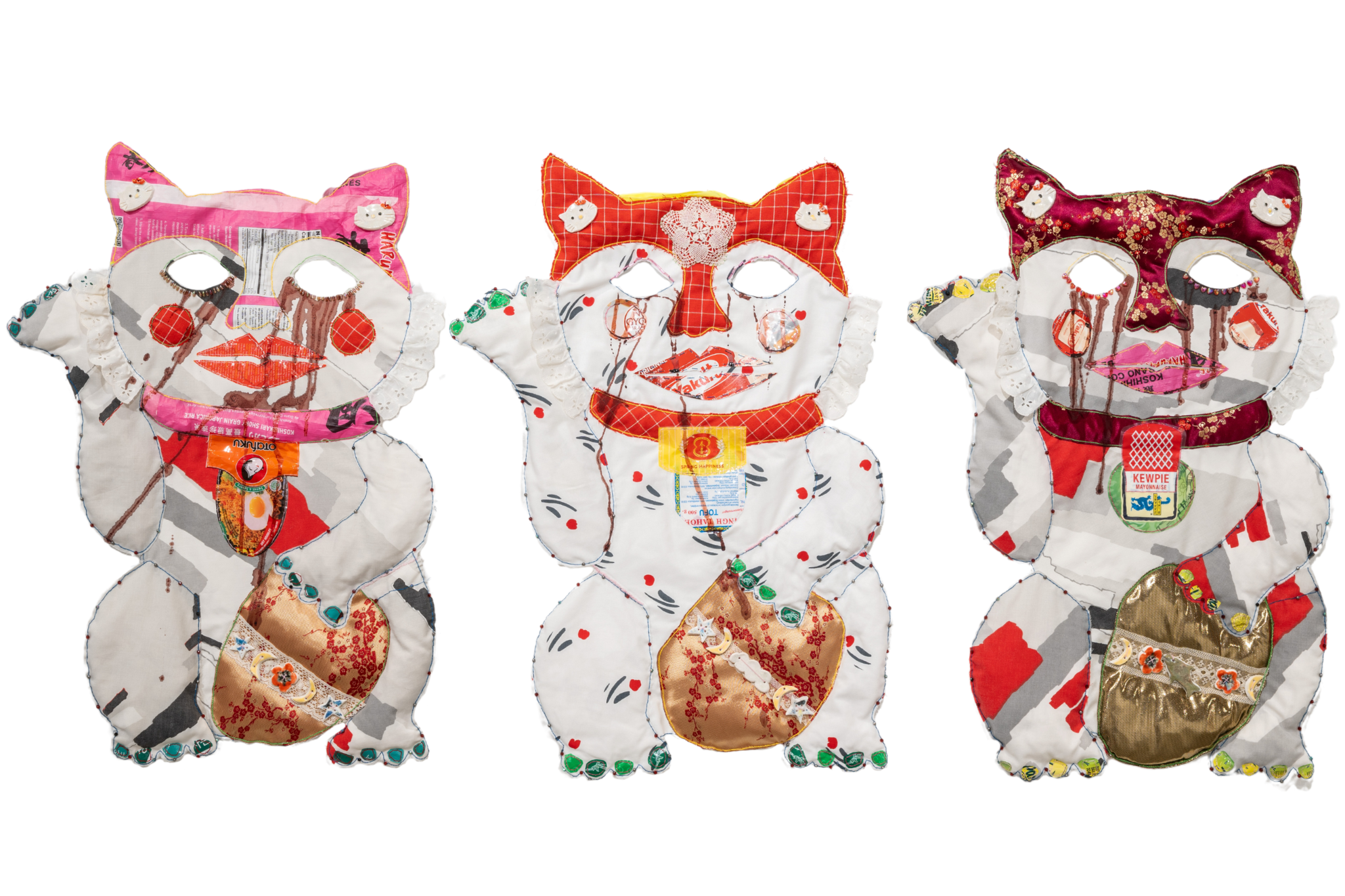
(2023)
69 cm x 48 cm each, triptych
artist’s blood, embroidery thread, found and second-hand fabrics, glass beads, lace, metal wire, packaging, porcelain beads, ribbonThe lucky cat is a pervasive symbol of Asian establishments worldwide. It is a lucky talisman to bring customers and good fortune. With the right arm forever raised, the wearer is stuck in a state of desire. Luck is tied to fortune in this talisman and the never ending desire to lure money to the wearer. Maneki Neko cats function as talismans of good fortune, but are also co-opted into the cycle of neoliberal greed (buy a talisman to bring more fortune). This is mirrored in contemporary craft as the use of craft in rebellion is inherently flawed as it still functions within the capitalist system. At the opening of the exhibition, Adrift, A Shift at Willem Twee Kunstrumie, Doherty anointed the Maneki Neko masks with her blood to symbolize immense disillusionment with capitalist greed.
